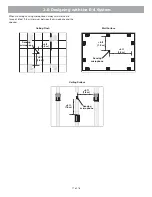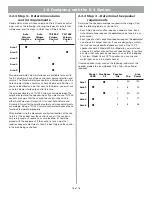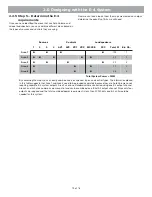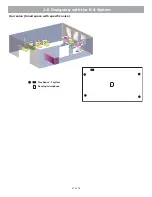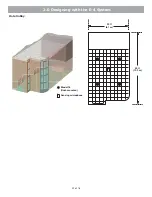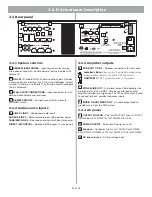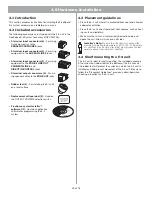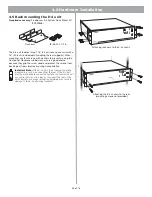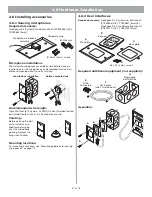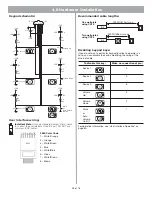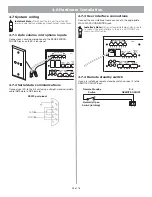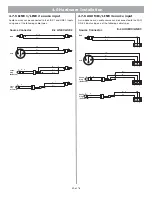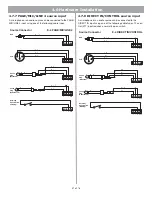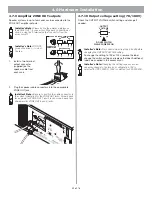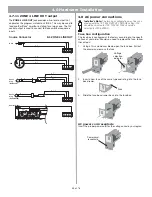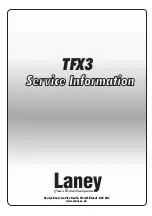
18 of 76
2.0 Designing with the E-4 System
2.2.3 Step 3 – Determine volume
control requirements
Decide which areas will have volume controls. Create a control
map, such as the following, showing the types of controls that
will be used, and the areas in which they will be installed.
Standard and Auto Volume interfaces are available for use with
the E-4 hardware. Each offers control over source selection and
volume. The Standard interface contains a Mute button, and the
Auto Volume interface contains an Auto Volume on/off button. If
you have identified an area that uses Auto Volume, you must use
an Auto Volume interface to control this zone.
It is also possible to use 70/100V volume controls between the
amplifier output and the speaker input. If you plan to use 70/100V
controls, be aware that they cannot be used in zones where
either Auto Volume or Dynamic EQ is used. Auto Volume and
Dynamic EQ monitor the amplifier output and make adjustments
accordingly. Using a 70/100V volume control would cause these
functions to operate improperly.
When determining the placement or physical location of the con-
trols, first think about how the control is used. If the control is
very rarely used or it requires a secure location, it should be
placed with the equipment. If the control is for an area that
requires frequent adjustments, then it is best to place the control
in the area being controlled.
2.2.4 Step 4 – Determine the speaker
requirements
Determine the speaker coverage required for the design. Con-
sider the following points as you do this:
• Each Auto Volume function requires a separate zone. Each
Auto Volume zone requires the dedicated use of one E-4 out-
put channel.
• Each type of actively equalized speaker requires the dedicated
use of one E-4 output channel. If you are designing a system
that uses actively equalized speakers, such as the 102
®
F
speaker, Model 32, Model 32SE, or Model 8, you must dedi-
cate one E-4 output channel for each speaker type. If you have
a system that uses passive speakers, such as the FreeSpace
3
®
system, Model 16 or 302™A speaker, you can mix and
match them on an E-4 output channel.
Create a speaker map, such as the following, and match the
speaker models to areas (Speaker Qty x Tap = Zone Power
required):
Auto
Volume
Interface
1
Auto
Volume
Interface
2
70/100V
Volume
Control
1
70/100V
Volume
Control
2
Area 1
●
Area 2
●
Area 3
●
Area 4
●
Area 5
●
Model
32SE
FreeSpace
3-I
Speaker
Qty
Tap
Area
Power
Area 1
●
2
50
100
Area 2
●
5
8
40
Area 3
●
1
50
50
Area 4
●
3
4
12
Area 5
●
6
8
48














